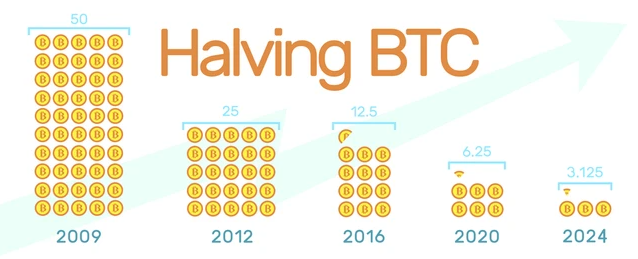In cryptocurrencies, the term Halving refers to a process that reduces the rate at which new coins are issued. It is a periodic reduction in the overall subsidy given to miners. Halving ensures that a cryptocurrency will follow a stable issuance rate until its maximum supply is finally reached.
In Bitcoin, new coins are generated continuously as part of the miner reward. So every time a miner "discovers" and successfully validates a new block, he earns coins as compensation for his work. So it is the mining process that introduces new Bitcoin into the system, and it does so at a predictable and controlled rate.
New Bitcoin blocks are mined, on average, every 10 minutes, and the block grant follows a controlled rate of decrease. Therefore, the halving is what ensures that the block grant will decrease by 50% every 210,000 blocks (approximately every four years).
In the first block, the Bitcoin block grant was initially set at 50 BTC. Then it was reduced to 25 BTC in 2012, and to 12.5 BTC in 2016. Once 64 reductions by half have taken place, the process will stop and no more Bitcoin will be created. The maximum supply of 21 million Bitcoin will then be reached.
